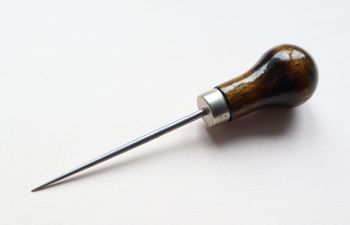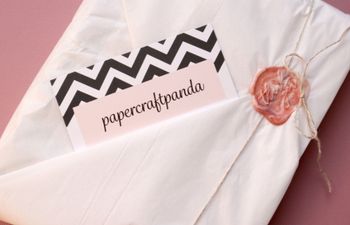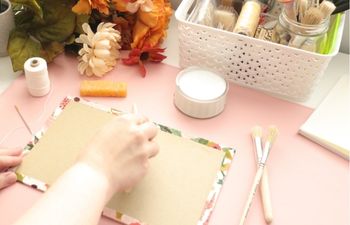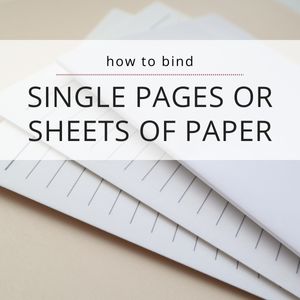Awls are sharp, pointy tools used to punch holes though thick fabric, cardboard or paper. In bookbinding, we use awls to pierce paper or book board before sewing. You’d think awls would be easy to understand and I guess they are, but there are lots of types of awls out there. So, wrote up this useful guide to different types of bookbinding awls to help make sense of the chaos.
Awl Properties
There are three main properties of awls: type, handle length and shape, needle design and gauge (diameter).
Awl Types
There are many different types of awls, but I’m calling out the four most common with a quick definition.
Bradawl – often used in wood work:
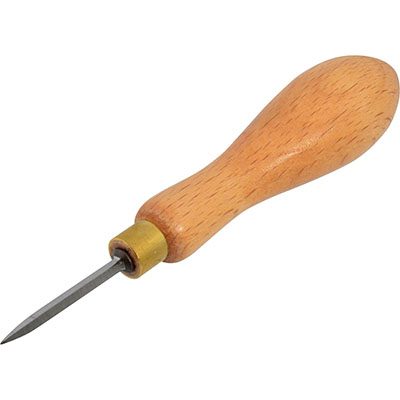
Diamond awl – a very sharp awl with a diamond-shaped tip used to make holes in leather without leaving a wide opening:
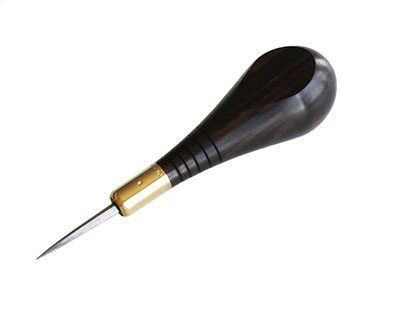
Tapered awl – used for lots of materials like paper, fabric, fleece, vinyl, plastic, leather, etc. Usually has a handle with rounded soft end to make it easier to hold in the palm.
he awls you usually see in bookbinding are the tapered type:
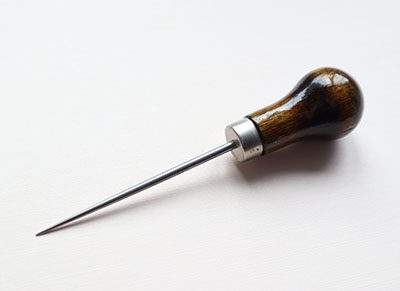
Threaded awl (needle/sewing awl) – has an opening on the metal needle tip for thread. Used to sew thick materials like leather or boat sails:
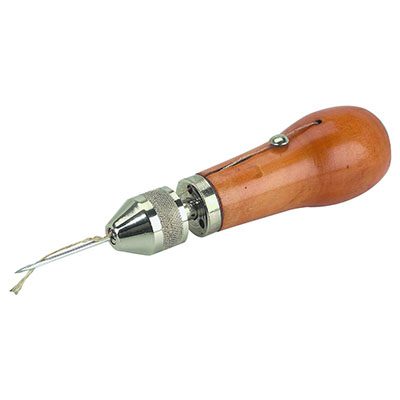
Awl handle length & shape
Awls are held in the hand while piercing paper and book board, so they need to be comfortable. “Comfort” is different for everyone, so there are tons of different handles out there. The two most common shapes are long and round. Some awls are a combination of both, but I’m leaving those snowflakes out of this.
Elongated (long) handles
Long handle awls are usually (but not always) considered light-duty.
Light-duty awls are for thinner paper, like text-weight or vellum. Don’t use these for heavy papers or board because they’ll hurt your hand and/or break. Don’t break the awl.
Bulbous (rounded) handles
Bulb-shaped awls fills up more of the palm, giving a sturdier grip and even force. These awls are usually (but not always) considered heavy-duty.
Heavy-duty awls make it easier to pierce through thick sheets of paper or book board:
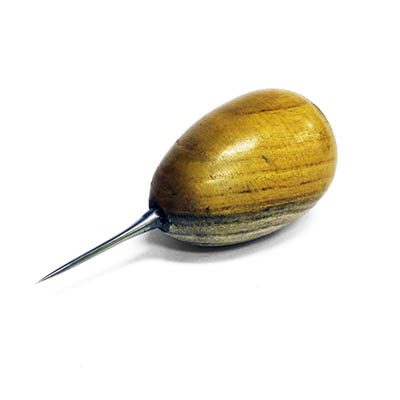
Needle design and gauge (diameter)
The needle of an awl is the metal part extending from the handle. Most awls have a thicker gauge near the handle that tapers toward the tip. When using this type of awl, it takes extra effort not to punch too far, because the further the awl goes into the paper, the bigger the opening may be. Bigger openings let more glue into the spine, which isn’t good for the book.
A smart person finally made an even-needle awl called a “bookbinder’s awl” so we can finally stop sweating the small stuff. Brilliant.
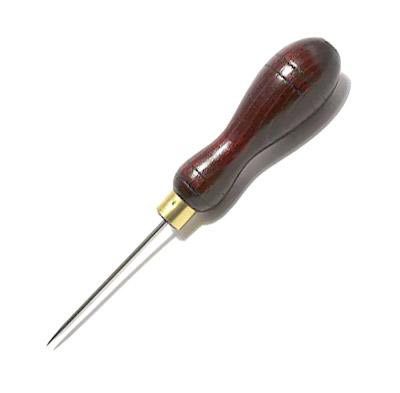
Interchangeable needles
You tool lovers will like this. Some awls have a handle and chuck. The “chuck” is a metal piece that can be loosened to swap out the needle. While a bit more expensive, these awls are smart to have if you work with lots of different types of materials.
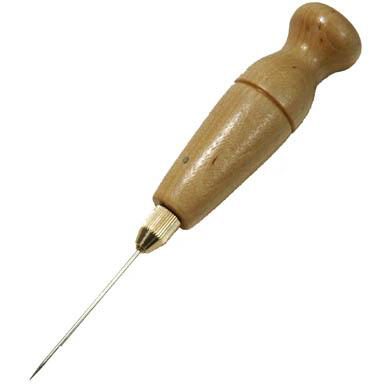
Resources
- If you’re looking at bookbinding tools and need some guidance, I created a free guide to help you out called the Bookbinding Tools & Supplies Quick Start Guide. Go check it out.
- If you’re new to bookbinding in general and need a place to start, check out my New Bookbinder Guide.
If you have more questions than answers, come see me on Instagram or Facebook. I’m just nerdy enough to enjoy bookbinding tool discussions!
ALL my best,
Misty
